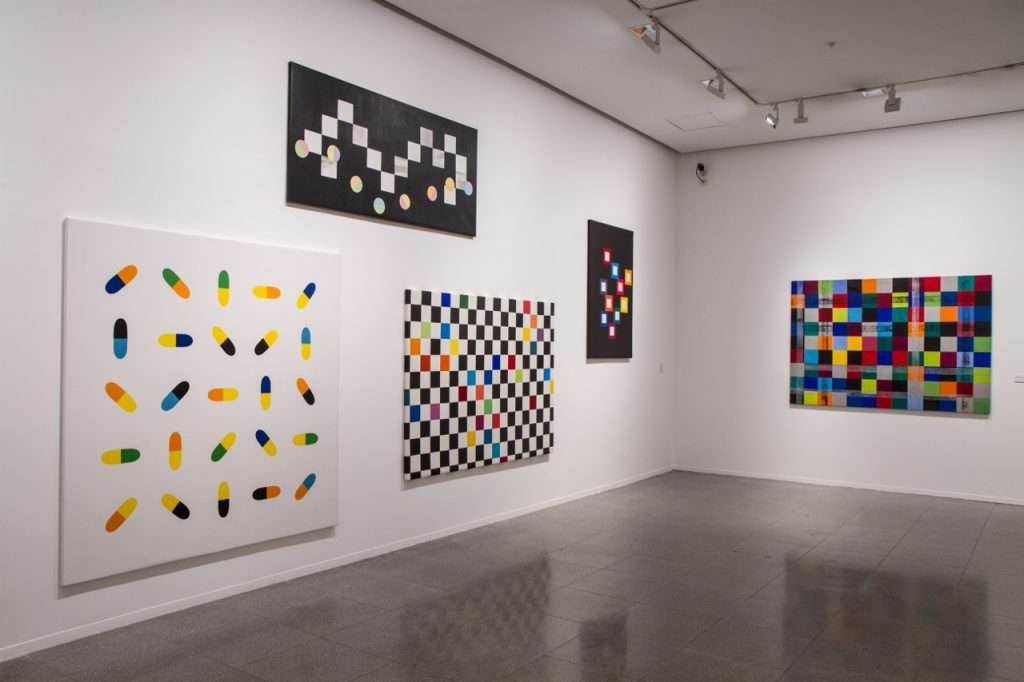Throughout her career, Graciela Hasper has painted and applied her pictorial perspective in different areas: drawing, photography, installations, films and urban projects. In this exhibition we chose to focus on her painting to explore the universe of forms, compositional systems, techniques and use of colour of one of the city’s great artists.
The artist’s visual thought is guided by painting (and the pictorial logic of watercolours). Hasper acts on two planes: she refers to European and Latin American modernist movements – hard-edge and Argentine Concrete Art, Brazilian Neo-Concrete Art and Venezuelan Kineticism – and their mechanisms for constructing artworks, but also blows them up, making them useless with baroque or excessively dynamic touches or by adding her own chromatic language: a festive way of refracting established categories and methods. She offers a celebration of colour as a vehicle for establishing direct communication. Far from subtle abstraction, the artist chose very early in her career to opt for an explosion of colour. Each of her canvases challenges the viewer’s eye to a visual game of shifting logic and misdirection.
And although the lines are built up from meticulous medieval style technical work – the artist and her assistants in the workshop seeking the perfect line – close observation of Hasper’s pictorial world quickly surprises us. Each one of her pure and perfectly defined lines and planes was achieved without the use of painter’s tape but by going over the surface a thousand and one times.
Between 1985 and 1990, Graciela Hasper (Buenos Aires, 1966) attended technical seminars and workshops, mainly that of Diana Aisenberg. In 1991 she won a grant from the Fundación Antorchas for a residency with Guillermo Kuitca. In 2000 she received a Fulbright-FNA grant for a residency at Apex Art, New York. In 2005 she received a grant from the Bellagio Center Residency Program / Rockefeller Foundation in Italy. She has held solo exhibitions at the Museo de Arte Moderno de Buenos Aires (2013); Zavaleta Lab Galería (2012); Galería Sicardi, Houston (2011); Galería Ruth Benzacar, Buenos Aires (2010, 2006, 2004, 1999); Annina Nosei Gallery, New York (2003, 2000, 1997); Chinati Foundation, Marfa (2002); and the Instituto de Cooperación Iberoamericana (2001, 1992).







